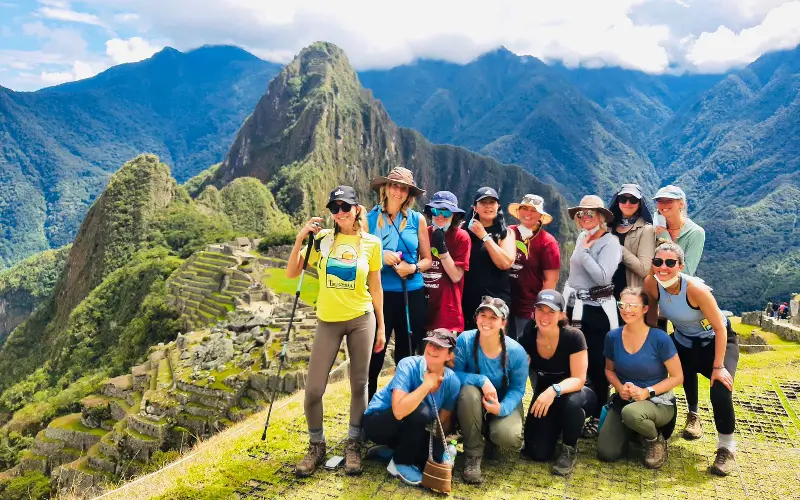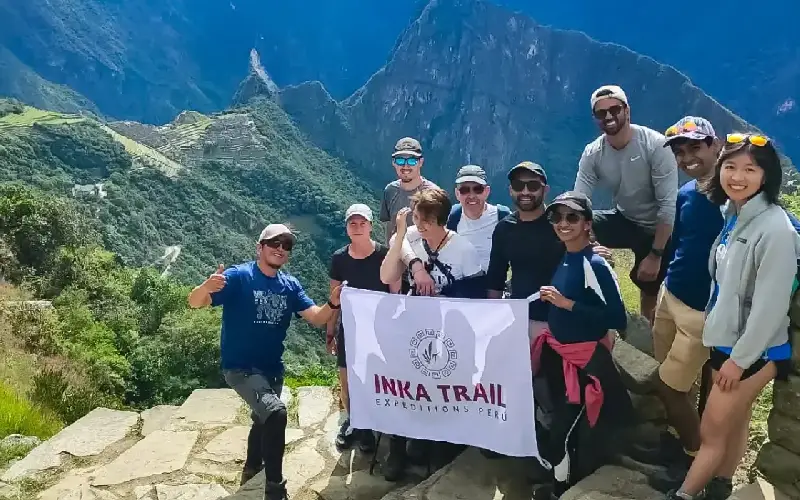The Inca Trail to Machu Picchu is one of the most famous trekking routes in the world. Every year, thousands of adventurers embark on this incredible journey through ancient paths, breathtaking landscapes, and historical ruins. If you are planning to hike the Inca Trail, this guide will provide essential information about the different routes, requirements, and expert tips to make the most of your experience.
Why Choose the Inca Trail?
Unlike other trails leading to Machu Picchu, the Inca Trail offers a unique combination of natural beauty, history, and culture. Along the way, you will encounter stunning Andean landscapes, cloud forests, and Incan archaeological sites that can only be accessed through this route. Additionally, arriving at the Sun Gate (Inti Punku) at sunrise provides an unforgettable first glimpse of Machu Picchu.
Inca Trail Routes
1. Classic Inca Trail (4 Days / 3 Nights)
The most popular route, covering approximately 42 km (26 miles). This trek passes through several significant Incan sites before reaching Machu Picchu.
- Difficulty Level: Moderate to Challenging
- Best for: Adventure seekers with good fitness levels
- Highlights: Dead Woman’s Pass, Sun Gate, and Wiñay Wayna
Read more about the Classic Inca Trail
2. Short Inca Trail (2 Days / 1 Night)
A perfect alternative for those with limited time or who prefer an easier hike. This route starts at Km 104 and includes a visit to Wiñay Wayna before reaching Machu Picchu.
- Difficulty Level: Moderate
- Best for: Beginners and those short on time
- Highlights: Wiñay Wayna, Sun Gate, and Machu Picchu
3. Salkantay Trek + Inca Trail (7 Days / 6 Nights)
This extended trek combines the Salkantay Trek with the Classic Inca Trail, offering a more adventurous and scenic experience before arriving at Machu Picchu.
- Difficulty Level: Challenging
- Best for: Experienced hikers seeking an immersive journey
- Highlights: Humantay Lake, Salkantay Pass, and Inca Trail ruins
Learn more about Salkantay + Inca Trail
Inca Trail Permits & Requirements

Do You Need a Permit?
Yes! The Peruvian government limits daily access to 500 permits, including trekkers and staff. Permits usually sell out months in advance, so book early.
- Booking Period: At least 4-6 months in advance
- Where to Get Permits: Only through authorized tour operators
Physical Fitness & Preparation
The Inca Trail includes steep ascents, high altitudes, and uneven terrain. Here are some key preparation tips:
- Train with hikes and cardio workouts at least 2 months before your trip.
- Acclimate to the altitude in Cusco (3,400m / 11,152 ft) for 2-3 days before the trek.
- Pack light but include essentials such as trekking poles, a headlamp, and comfortable hiking boots.
Best Time to Hike the Inca Trail
Dry Season (April – October) ✅
- Best weather conditions with clear skies
- Cooler nights but minimal rain
- Most popular season – book early!
Rainy Season (November – March) ❌
- Frequent rain and muddy paths
- Fewer crowds
- Trail closes in February for maintenance
Packing List for the Inca Trail
- Essential Gear:
- Hiking boots 🥾
- Waterproof jacket 🌧️
- Trekking poles 🚶♂️
- Headlamp 🔦
- Documents & Permits:
- Original passport 📜
- Inca Trail permit 🏷️
- Snacks & Hydration:
- Water bottles or hydration pack 💧
- High-energy snacks 🥜🍫
Alternative Treks to Machu Picchu
If Inca Trail permits are sold out, consider these amazing alternatives:
- Salkantay Trek (5 Days): More challenging, with high-altitude passes and scenic landscapes.
- Lares Trek (4 Days): A cultural experience with visits to local Andean villages.
- Choquequirao Trek (7-9 Days): A remote and less crowded route leading to another major Incan city.
